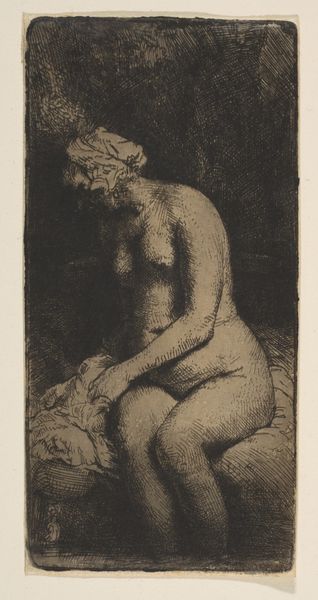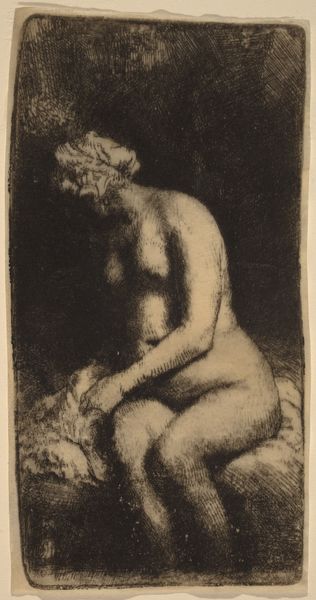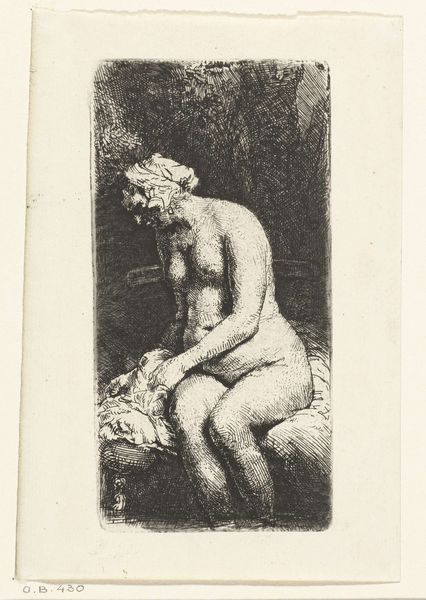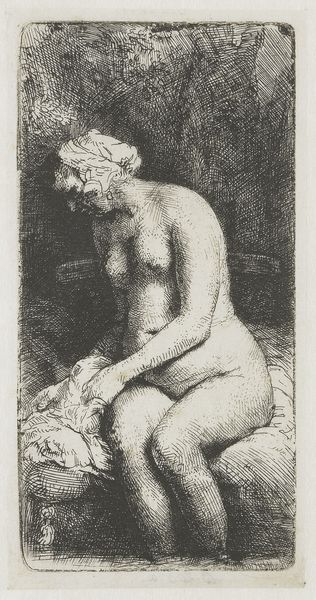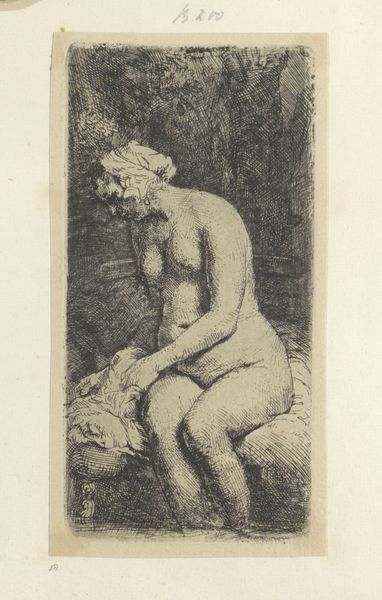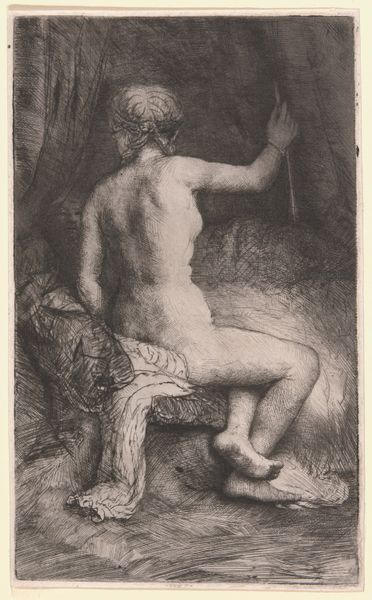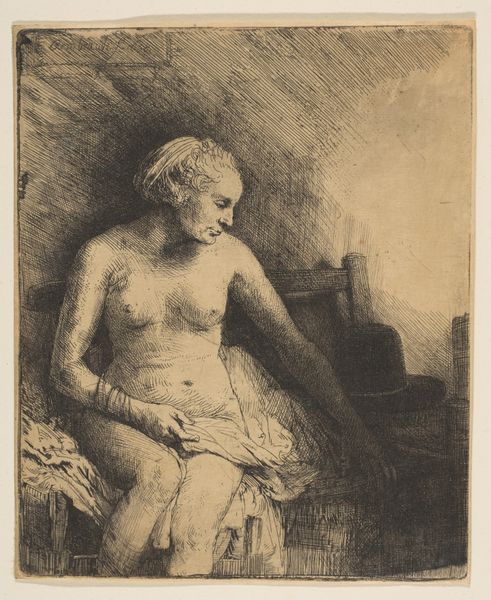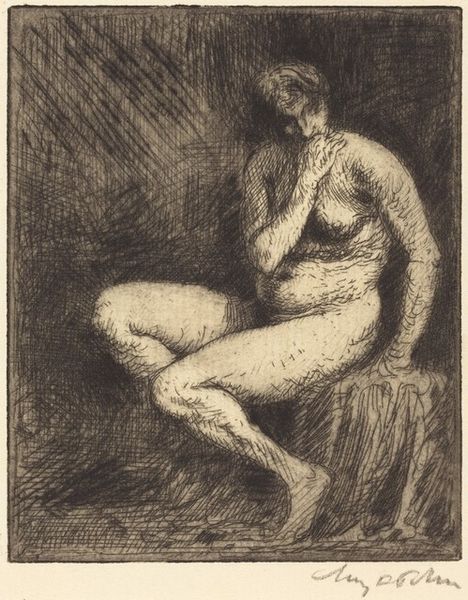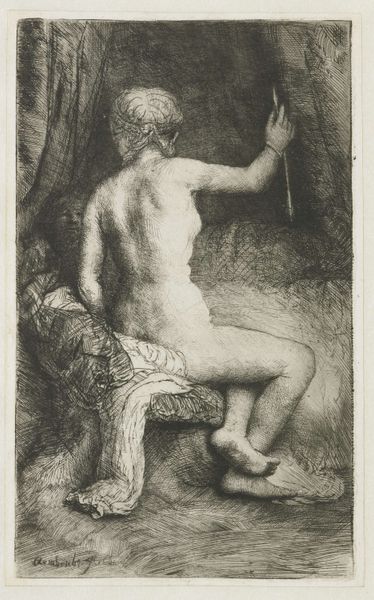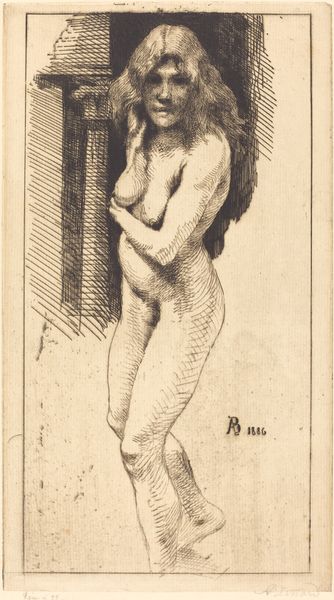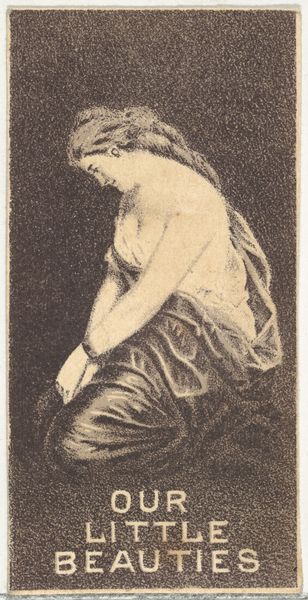
drawing, print, etching
#
drawing
#
baroque
#
dutch-golden-age
# print
#
etching
#
female-nude
#
pencil drawing
#
history-painting
#
nude
Dimensions: sheet: 6 5/16 x 3 1/4 in. (16.1 x 8.2 cm)
Copyright: Public Domain
Editor: This etching by Rembrandt van Rijn, made in 1658, is called "Woman Bathing her Feet at a Brook." It feels very intimate and immediate, like a stolen glance. What strikes you most about this print? Curator: Well, immediately, the focus is on the process of etching itself. Consider the materiality: the copper plate, the acid, the resist. Each mark is a direct result of labor, of a physical engagement with materials. Rembrandt wasn’t just depicting a bather; he was also revealing the mechanics of art-making. Editor: So, you're saying the *how* is as important as the *what*? Curator: Exactly. Look at the way the lines are etched: heavy in some areas, delicate in others. He is revealing the time-consuming, manual nature of reproductive printmaking, elevating a traditionally “lower” art form to the realm of fine art. How do you see this playing with our traditional notion of art? Editor: It’s interesting to consider printmaking not as purely functional, but as a display of skill. It seems like he’s turning the industrial into something expressive and valuable. Is there any comment here on the art market? Curator: Absolutely. Think about how etchings could be widely disseminated, creating a market for Rembrandt's imagery. He controlled the means of production, therefore controlled profit. This challenges the traditional patronage system, disrupting the high art and craft division. Editor: That’s fascinating! It’s much more than just a simple scene; it’s a statement about the business and craft of art itself. Curator: Precisely. By examining the process and materiality, we unearth deeper meanings concerning labor, value, and the artist's role in a changing society. Editor: Thanks so much! I’ll never look at an etching the same way again. Curator: My pleasure! It’s about digging beneath the surface to appreciate the artistic intent embedded in the very act of creation.
Comments
minneapolisinstituteofart almost 2 years ago
⋮
Late in Rembrandt’s printmaking career, images of nude women became his most favored theme. Woman with her Feet in a Brook explores the soft sensuality of the female body seen in soft light. As is so often the case with Rembrandt, his work began with acute observation of the world before him and then progressed in to the realm of fantasy and imagination. The model sat on a cushioned chair, the backrest of which extends to either side of her. As Rembrandt’s mind wandered, the chair became an embankment strewn with clothing and a grand pillow with an extravagant tassel. The woman gazes down, seeming to attend to her garments. Her lower legs disappear into water that has just the faintest glimmer of reflection on its surface. Behind her Rembrandt added the suggestion of a forest landscape.
Join the conversation
Join millions of artists and users on Artera today and experience the ultimate creative platform.
